All photos in the gallery by Tobias Wang of Visualbass Photography.
After almost two decades of hosting the world’s biggest DJs, alongside some of Toronto’s finest, Canada’s largest nightclub recently closed doors to make way for condo development on the waterfront. With the participation of some of The Guv’s key players, Then & Now delves deep to tell the exhaustive story of a club that mirrors – and contributed greatly to – electronic music’s evolution. Rave on.
By: DENISE BENSON
Club: The Guvernment complex, 132 Queens Quay East
Years in operation: 1996 – 2015
History: Charles Khabouth has been mentioned throughout the Then & Now series as his influence in Toronto nightlife is widely felt. Khabouth’s earliest nightclubs, Club Z on St. Joseph and Stilife on Richmond, were pioneering in very different ways. Early in 1996, he began work on a wildly ambitious project, one so successful that it would both cement Toronto’s reputation as an international clubbing destination, and anchor Khabouth’s ever-expanding business empire. But things could have turned out very differently.
In the mid ‘90s, the stretch of our waterfront near Queens Quay and Jarvis was still fairly isolated and industrial. A stone’s throw from Lake Shore Boulevard, it held factories, parking lots and stretches of open space. Condos did not dominate the landscape.
The 60,000 square foot space at 132 Queens Quay East had housed large clubs in its recent past. From 1984 to late 1985, it had been home to the Assoon brothers’ innovative Fresh Restaurant and Nightclub. For the next decade, it was the location of popular club RPM and its sister concert space, the Warehouse.
When Khabouth took over the building on January 1, 1996 he couldn’t have known that he had almost eight months of renovating ahead. But he did know that he had to compete with Toronto’s then-booming, highly concentrated Entertainment District.
“I thought, ‘How am I going to compete with 50 nightclubs side-by-side downtown?’ Khabouth tells me during an expansive interview. “Kids would go to the one area and bop around all night long. I realized I had to do a multi-room venue or I had no hope in hell. That’s why I created five venues under one roof, plus the Warehouse, which really was a warehouse.” Though the Warehouse was already well established as a concert venue, Khabouth mainly attributes this to its size (Toronto has a dearth of such venues with a capacity of two to three thousand).
“There was nothing there,” he exclaims of the space; “There were not even any bars built. Instead, there were boxes that they used to stand up and roll out, with Pepsi-Cola beer fridges. There was no running water. There were columns in the Warehouse; I spent millions of dollars just removing five columns. I rebuilt the stage. An insane amount of money went into there.”
Khabouth’s pockets were not as deep in early ‘96 so he had to spend wisely. He hired Yabu Pushelberg, who had designed Stilife’s stunning interior, and asked them to work on a tight budget. As a nod to Stilife, there was a section of ceiling-to-floor chains installed in what would become the Guv’s main room, but little else was similar.
“They didn’t go all out, in terms of spending money, because they understood the situation,” says Khabouth of the designers. “So the aesthetics were cool, but there was no marble, no granite, no silver leaf ceilings. What we did was build some beds with fun fur, some furniture with bubble gum, purple, lime green and orange vinyl. We made the room sexy, but more of a fun space.”
The Guvernment complex opened in summer 1996, with the main room and Acid Lounge off of it, Orange Room, The Drink, and a rooftop patio. This section of the building was licensed for a total of 1600 (over time, and with multiple renovations, capacity would more than triple).
People entered through a curved area, turning around a bend before walking directly onto the dancefloor. Where RPM’s emphasis had fallen on its huge bar in the middle of the room and stage along the east wall, which had a dancefloor sectioned off of it by railings, the Guv’s main room was all about the dancefloor. Bars surrounded it.
Most impressive of all was The Guvernment’s sound and lighting.
“I had the sound system custom made [by New York’s Steve Dash of Phazon]. All of the boxes, the mixing board, everything was custom made for us. We had the identical sound system until the end.
“I had hydraulic trusses – nobody had hydraulics back then – that went up and down, with moving lights. I also got a massive laser; at the time, it was the largest laser in Canada. I wanted the sound and the lighting to wow people. I spent a lot of my money there so that when you went in, you felt ‘Whoa!’”
More than 12 million people would come to be wowed at the Guv over time, but crowds did not flock there from the start. It took a while for people to even know it existed.
“My biggest issue was that by the time I opened, I was in a lot of debt,” Khabouth admits. “That thing was like the ocean; it was never-ending. You’d rip one wall out, and it would be rotted so we’d have to rip out the floor and the ceiling. And then there would be plumbing that had rotted, and electrical issues. It was layer after layer. By the time I opened, I was completely out of money to do promotion and marketing. There was no social media back then, remember.
“We opened in the middle of summer, when The Docks [now Sound Academy] had just opened, and they had this beautiful patio on the water. Cars would stop and ask us how to get to The Docks; they didn’t know we were open or have a clue who we were. It took about three or four months of hanging on to that massive building before we were up-and-running. When you’re supposed to have a few thousand people and you have three hundred, it’s scary.”
Why it was important: There are myriad reasons why The Guvernment (eventually to become known simply as ‘Guvernment’) was a significant venue in Toronto and beyond. Some were evident from its start, including Khabouth’s commitment to dance and electronic music.
Khabouth hired Albert Assoon, formerly of Fresh and Twilight Zone, as Guvernment’s first musical director. Early DJs included names familiar from Stilife, like Joe Marella and JC Sunshine. Still, it was a slow build.
A Saturday night appearance by Danny Tenaglia helped change that. Sound engineer Steve Dash, also co-owner of influential New York club Sound Factory, where Tenaglia played, suggested that Guvernment book him.
“I was like ‘Who the hell is Danny?’” chuckles Khabouth. “He was very much gay focused at that time; the straight market hadn’t caught on to him yet. What happened that night was really weird.
“By that time, we were attracting maybe a thousand people weekly. Then we also had a thousand or 1500 boys show up. When Danny went on, all the shirts came off. I had some people leave, asking ‘Is this a gay club? Is this a straight club?’ It was a funny, but good experience. Danny was so able to drive the sound system – he used it to its fullest and honestly, it was hair-raising.”
As luck would have it, Khabouth had also hired a new resident DJ to launch Spin Saturdays the following week.
Mark Oliver was already well established in Toronto, having played countless warehouse parties, and clubs ranging from the gritty and groovy (Cameron House, Tazmanian Ballroom) to larger and more polished (Klub Max, Go-Go). By 1996 though, Oliver was at the centre of our rave scene, having emerged from the dark rooms of 23 Hop (318 Richmond) to play massive productions.
“I was headlining pretty much every rave in town at the time, and was playing at Buzz, which is now Comfort Zone,” says Oliver. “Charles knew he had to go big with Guvernment, and questioned me. He knew I played the raves, and was probably concerned about all the things he’d been reading about that scene. He also wanted to make sure I would be able to play some of the more commercial sounding club tracks. I assured him that I’d played Klub Max before, and that I always play the room. I don’t like to cheese out all the way, but I do understand the usefulness of a good remix.
“I think Charles was still a bit nervous, but we set a date, which was in September of 1996. Danny Tenaglia had played the week before. From that Saturday until the end, it was packed every week.”
“From the first night Mark was there, I thought ‘Wow. This guy gets it,’” credits Khabouth. “Playing a big room is difficult. The sound has to be big, and the programming is totally different. Mark has an incredible talent. He never misses, never.”
Oliver had a deep appreciation of Guvernment’s sound system. “As a DJ, you want the best sound possible, and it was a dream come true,” he enthuses. “I knew with Albert there that it was going to be something special, based on his pedigree with Twilight Zone. The sound itself was pristine. The monitors matched perfectly to the dancefloor, so whatever you heard up in the booth was what people heard below. The DJ booth was still in the spot where it was at RPM, so it was pretty high up from the dancefloor, and quite removed, which suited me perfectly.”
Though there were occasional live PAs, with performances by vocalists including Gwen McCrae and Octahvia, Oliver played Guvernment’s main room “Every Saturday, from beginning to end, for the first five years.
“It was basically a rave, but there was a dress code,” Oliver describes; “So instead of wearing fun fur, everyone wore shirts that looked like they’d just bought them to get in the club. Then they tried to get them off as soon as they could. Any time there was a shirtless dude, three bouncers would make him put his shirt back on, at least back then.”
Ravers, in fact, were a big part of what kept The Guvernment complex afloat early on. Khabouth rented the rooms to rave production companies, which met everyone’s needs at the time. This helped a scene under scrutiny continue to grow, and paid some bills while word of the Guv spread.
“Basically, the City had jumped all over the rave promoters, and essentially sent the raves indoors,” recalls Jamil Kamal, who started working security at the Guvernment in 1996, and became Khabouth’s right-hand-man in all things risk management.
“The raves were forced into club venues, and Charles had the biggest one.”
Promoters like Better Days, Destiny, Hullabaloo, Kind, Renegades and Syrous took full advantage of the club’s potential. Some people grumbled about the move from warehouses, roller rinks and borrowed spaces to legal venues, but there were advantages.
“I wasn’t against the legal venues as they had proper plumbing, exits, alcohol for sale, and proper security,” says Marcus Visionary, local DJ, producer and drum ‘n’ bass ambassador. “Some people hated the legal events, but many of us embraced them because they were safe, and they were at less risk of being shut down.
“I loved playing inside the Warehouse as it felt like an underground venue, but much more secure. One of my favourite Syrous events was held there – the five-year anniversary [in 1998] with True Playaz, featuring Hype, Pascal, Fats and GQ.”
Syrous ‘Hyped,’ 5-Year Anniversary Party, 1998. Video by Rick Toxic.
“Our Syrous five-year was one of the first raves where the entire complex, and all the rooms in it, was filled,” recalls Rob Lisi, a Syrous co-founder.
That same year, Lisi and fellow rave entrepreneurs Steve and Wayne Mealing (a.k.a. DJs Stretch & Hooker), Aaron Micks, and Tyler Cho formed Lifeforce Industries, an umbrella organization under which their Syrous, Renegades and Dose brands lived. Between 1996 and 2001, they produced about 10 parties at the Guv and Warehouse (Warehouse became KoolHaus in 1999, following renovations).
“I liked the fact that KoolHaus was an empty shell, and you could create whatever you wanted with it,” says Lisi. “You could have parties there every week, and make them look totally different. The main room on the other hand was already operating as a nightclub. The design and décor were impressive, and the sound system and DJ booth were second to none at that time.
“For the more established promoters, the Guvernment complex was the only game in town. Until we started producing events with 10 to 15 thousand people, and growing into venues like CNE and The International Centre, there weren’t a lot of large, legal venue options in the city. The Guverment’s location meant it was far enough from residential neighbourhoods that you wouldn’t get 20 sound complaints in a night. The capacity of the whole complex was also attractive to promoters because you could accommodate 5000 people, with the potential to program different genres of music in each room.”
The multiple rooms and distinct experiences they offered was always one of the venue’s biggest draws. Khabouth understood how to maximize these differences to create a unique whole.
“I had worked security at clubs like Joker and Big Bop, both of which had multiple floors and DJs, but it was always the same demographic moving from floor to floor,” describes Kamal. “What I really appreciated about Guvernment in its beginning was that you had this incredible complex that catered to completely different crowds.
“Other than the Acid Lounge, every room had its own DJ booth, entry, washrooms, coat check and identity. It wasn’t just ‘The hip-hop room of the Guvernment.’ People would say ‘I’m here for the Orange Room.’ There were people who went to The Drink for years, and never ventured elsewhere. They drove in from the suburbs, went up to The Drink in their dress pants and shirt, and never went downstairs.”
The Drink was Guvernment’s VIP space. In the RPM days, the room had been where people went to play pool and gaze out at the lake. Khabouth boarded up the windows, courted light controversy by putting in fish tanks for tables and lining one wall with a shelf of dildos, and hired smart, attractive people to decide who got in.
Zark Fatah, now partner in Capture Group, was one of those people. He had worked at RPM as a go-go dancer, got hired as an early Guvernment bartender, and promoted various rooms at the club before heading to Miami for a stretch. When he came back in 1999, Fatah worked door at The Drink.
“My thing was bringing in the more fashion forward, mature demographic,” Fatah says. “To get in to The Drink was not easy; you had to look a certain part, and cover charge was higher. The Drink was that next level of clubbing.” “
The Drink catered to the suit-and-tie, cigar-smoking crowd,” summarizes Oliver. “The Leafs used to come after their games. Mats Sundin used to hang out there. It was the hot spot. Although you could walk back and forth, that crowd stuck to The Drink and the ravers stuck to the main room.”
Friday nights at The Guvernment also attracted a variety of people to the different rooms. The crowd was largely gay for well over a year, with DJs including Cory Activate, James St. Bass and Matt C playing alongside out-of-town guests. Guv was known to be very gay friendly, with Boy’s Life events, Prism parties, and other special events in the overall programming mix.
Early in 1998, Global Fridays launched as a new weekly. DJ Clymaxxx, known for his signature three-turntable sets (the xxx represents three turntables) and for packing The Joker nightclub for two years’ of Fridays, became a Guv main room resident. DJs Kid C, Dave Campbell and Baby Yu (now official tour DJ for Young Jeezy) joined him, while G-Money played in The Drink, Toney Williams MCed, and people like Neil Forester (now owner of the Substance Group) hosted.
“We called it ‘Global Fridays’ because we wanted to cater to everyone,” explains DJ Clymaxxx. “It was Latin upstairs in The Drink, classic tracks in the Acid Lounge, and a different music format in each room. The main room was straight urban, with R&B, hip-hop, dancehall, and even some soca.
“Urban music was starting to blow up in the mainstream again, but back then you could only really listen to R&B and hip-hop at much smaller venues. A lot of club owners worried about touching an urban night, but then, Charles was never typical. He took a chance on bringing the format into the main room for a weekly. In the process, he captured a massive audience that wanted to experience an urban party in a world-class club environment.”
From 1998 to 2004, Global Fridays packed the Guv, with a range of big-name guests, like Funkmaster Flex, Cipha Sounds, DJ Clue, and DJ Who Kid adding to the vibes. Clymaxxx got crowds pumping to the sounds of anthems like Mobb Deep’s “Shook Ones Pt. II;” M.O.P. featuring Busta Rhymes’ “Ante Up”;” Notorious B.I.G. “One More Chance;” Jay-Z “I Just Wanna Love U,” and 112’s “Only You.”
“The Friday night crowd was extremely passionate about music,” says the DJ. “Thousands would jump up and down, chanting lyrics in unison, and go absolutely nuts. I could literally feel the room shake. That’s another thing that was so different about Charles: where other club owners would tell me to calm it down because the crowd was getting too fired up, he relished the crowd reaction. He would routinely walk into the DJ booth during prime time, inspect the absolute pandemonium going on below, then tell me to kick it up a notch and make it crazier.”
“The Guvernment was a spectacle every night, and Charles made it that way,” confirms Kamal. “It was a testament to his vision. People will ask ‘Can you learn what Charles does?’ Operationally, sure, but you can’t learn what he’s created. There’s no book that can teach you that. He can look at a room and turn it into something special.”
Khabouth’s genuine love of dance music fed into that vision. The success of many full-facility raves only added to his belief that electronic music should figure prominently in the Guv’s programming.
“I saw where the music was going, and where the kids were going,” says Khabouth. ”The music was great. My biggest thing in life is that I like to do what I enjoy, and I loved this.
“I used to have a baseball cap I’d keep in the back, and when I put it on, the staff would know I was going to dance. I’d go in the middle of the floor, and dance. I wasn’t thinking ‘How much money did I make tonight?’ I was thinking ‘This is awesome!’ Of course I want to make money, but I was driven by the music, the energy, the kids that got all dressed up to come out, the costumes. It was an era when people came out and had an incredible time.”
In some ways, it’s both impressive and amazing that a venue the size of Guvernment remained committed to an electronic music format on Saturdays for its entire history. There was a period in the very early 2000s when Toronto’s rave scene fractured, the audience for the music shrunk, and the parties moved into more intimate club settings. Guvernment also had to compete for crowds and talent with newer clubs like System Soundbar and Turbo. The guaranteed big room draws weren’t as plentiful then as they would become less than 10 years later, as EDM became all the rage in America.
“It was risky [to focus on electronic music] then, in every way,” says Khabouth. “We had cops harass us; the music wasn’t very commercial, radio wasn’t playing it. Even though we did big numbers sometimes, it was still very much an underground scene. We took a lot of chances.”
Spin Saturdays remained popular, with Mark Oliver at the musical helm. His vantage point allowed him to see a lot more than the crowds; Oliver also observed as touring DJs came to expect the spotlight.
“The first five years, it was just me playing all night, and then we started bringing in more guests, especially after Industry closed,” Oliver recalls. “I remember that some of the guests, instead of having the gooseneck lamps pointed down at the turntables to see the record grooves, they turned them up towards themselves and put them on full blast. They wanted everyone to see them. It soon became evident that a lot of these DJs wanted to be down on the stage, so [in 2007] the room was renovated significantly.
“The original stage, along the east wall, became bottle service – that whole thing was coming into play so they needed to create booths and tables – and the stage itself was moved right into the middle. The DJ booth was put on hydraulics so you could lower it right down. That way the superstar DJs could be front and centre, and when there were concerts, the booth could be lowered underneath the stage.”
Early guests included a number of British DJs, like Carl Cox and Paul Oakenfold, who had played huge Toronto raves as well as at Industry nightclub, but weren’t yet household names across North America. Guvernment was impressive to them.
“For the first few years that guests were coming in, guys like Sasha and John Digweed would say ‘This is the best club in the world.’ It had that reputation,” says Oliver.
“A lot of times, they would tour through the States and play Toronto before going back to Europe. This was before the EDM explosion so they were playing all kinds of weird venues in the U.S., like country bars and stuff. Then they’d come in to Guvernment and be blown away. Some were shocked, like ‘This is better than Ibiza!’”
Oliver missed less than 10 Saturdays during Spin’s long run (“Firstly, I have four kids so I wasn’t going to travel all that much. Also, touring DJs would say to me ‘Why would you go anywhere else?’”). His perspective as an 18-year resident at the largest club in Canada meant he was not only witness to trends in big room club music, but also to changes in DJ styles and skills.
“We started off with Danny Tenaglia, Junior Vasquez, David Morales, and guys who’d been spinning for years,” explains Oliver. “They were true DJs. Then it seemed that anyone who put out a track was a DJ, and many just weren’t. They were producers, and they’d come in and try to DJ, but it would fall apart. A lot of the crowd became less discerning.”
Over time, and with a lot of EDM producers’ reliance on concert-like production values to enhance the impact of their massive beats and dramatic bass drops, crowds also came to expect a show rather than a steady flow of sound through the night.
“For a lot of the younger crowd, it can be more about ‘What’s this DJ going to do visually to turn me on?’ rather than sonically,” offers Oliver. “Some people would look at me and say I was boring because I wasn’t raising my hands and striking poses. But I’m actually working, putting a set together on the fly. Guys like John Digweed, it’s the same thing. His head is down most of the time, focused on what he’s doing. Others would come in with sets all pre-programmed on Traktor or Serato; they were all about the interaction with the crowd. It seems to be split these days; half the crowd is into that while the other half is deeper into the music. I just stuck to my guns and played what I play.”

Digweed DJing Guv main room at Labour of Love in 2005. Photo by Tobias Wang of VisualBass Photography.
No matter where one stands in relation to this divide, or your personal tastes in electronic music, there simply is no denying that both Guvernment and INK Entertainment, the company Khabouth founded as an umbrella organization for his multitude of clubs and lifestyle projects, book the biggest name in the biz. Avicii, Armin van Buuren, Afrojack, Tiësto, David Guetta, Hardwell, Steve Angello, Above and Beyond, Deadmau5, and so many more of today’s top tier touring DJs have played the Guv, many of them multiple times, including early in their careers.
“People say it’s because we throw a lot of money at talent,” says Khabouth of INK’s access to agents and bookings. “I think we pay less than most people do. We’ve been there since day one, and there’s a certain commitment from the managers, the DJs – that ‘Hey, these guys were booking us when we were 500 bucks.’
“If another player comes to town tomorrow, who doesn’t have the relationships, but they had a hundred million dollars, they couldn’t book the same talent. Why? Because we have those relationships, those partnerships, friendships, and understandings. With us, they know the production will be quality, and that we’re going to fill the room. Then you’re building somebody’s name and career.”
INK and the Guvernment have also remained leaders in the electronic music industry through sheer size and volume, with ownership of club venues past and present including This Is London, Cube, Uniun, and Dragonfly in Niagara Falls, not to mention festivals such as VELD. Khabouth also gives credit to INK’s Music Director, Talal Farisi.
“Talal has been with us for 13 or 14 years, and he definitely has his finger on the pulse. He’s 24-7. He’s got a good ear for finding talent, finding who is up-and-coming, and for building incredible DJ lineups.”
In turn, people such as Zark Fatah, who now co-owns clubs such as Maison Mercer, credits Khabouth. “Guvernment put Toronto on the map globally,” Fatah states. “What Charles did was provide an amazing platform for some of the best DJs in the world to come and play our city. In North America, we are one of the few cities that sees the talent that we get.”
There is no question that the Guvernment’s bookings are a big part of what earned the club its international reputation as a place to play, for DJs and clubbers alike. Guvernment regularly ranked well in DJ Mag’s annual Top 100 Clubs lists, reaching as high as #8 in 2008. The club’s design, constant refreshing, and Khabouth’s well-established attention to details also played a big part.
“I’ve traveled to Ibiza and all the big club destinations around the world, and I still find Guvernment to be impressive,” says Fatah, also an avid photographer and prone to observing minutiae himself. “It was unique, with so many offerings. Design and details were always very important to Charles, and he definitely had the creative vision to push the envelope, and do what he thought would be cool.
“He didn’t have to brand five different rooms, but he did. And then he would renovate and reinterpret each room every few years. A lot of club owners get complacent, and don’t change anything until it gets to be necessary. Charles has always been very progressive in his thinking.”
“I would simply describe the space as world class,” agrees DJ Clymaxxx. “There really was nothing comparable in the city. I’ll always remember the look of awe on people’s faces when they walked into the main room for the first time. I saw that reaction a lot over the years; it was the same reaction I had. Because of Charles’ continued reinvestment in the venue, the club always felt fresh.
“There was a certain ‘it factor’ about Guv – something that just made it feel totally different from any other club in the country,” adds Clymaxxx. “If you ever found yourself in the middle of a packed dancefloor there at 2:30am, blinded by the lights, and with the speakers pounding, you probably know what I’m talking about.”
Who else played there: Although this article largely focuses on the Guv as a significant home for DJs and electronic music culture, it must be said that the complex hosted bands, productions, and music of all types.
Hundreds of artists played on the Guvernment stage, such as Daft Punk, Brand New Heavies, Macy Gray, Jungle Brothers and Le Tigre. The Warehouse and KoolHaus were host to thousands, with a tiny list including David Bowie, Prince, INXS, Bob Dylan, Sonic Youth, Coldplay, Chemical Brothers, The Knife, Portishead, Prodigy, Underworld, Lady Gaga, Justin Bieber, Kings of Leon, Chromeo, My Bloody Valentine, Broken Social Scene, Foo Fighters, Neutral Milk Hotel, The Roots, and Lykke Li.
KoolHaus also got a workout during the Guv’s many full-facility long weekend events, like Labour of Love and Decadence. The room continued to be of importance for junglists as Theory events often spilled over into the space.
Theory was a drum ‘n’ bass series that ran from 2002 to 2009. Launched by former Guvernment talent booker Jose Rodriguez, Theory was co-produced and anchored by Toronto DJs Tasc and Marcus Visionary, with Mr. Brown, Clancy Silver, Frankie Gunns, and others later coming on as co-residents. The full spectrum of dnb and jungle was represented through Theory’s seriously stacked lineups.
“At one point, Theory was the largest dnb company in the country,” says Visionary. “We booked most of the big names over the years. We had Fabio on the rooftop, Andy C and Shy FX in The Drink, Mampi Swift in the Gallery, and several massive raves in KoolHaus and the Guv main room. We also had Die and Krust play a back-to-back set in The Drink, which was very memorable. The Drink was a long, not-so-big venue that would get rammed, and the energy was always so incredible! I also can’t count how many times we had Hype, Calibre and Fabio inside the Orange Room.
“The Guv complex most definitely played a massive role in the development of dnb,” adds Visionary, who continues to DJ and produce prolifically, tours Europe regularly, and now broadcasts twice monthly on British radio station Kool London.
Over the years, Theory also presented dnb giants like Grooverider, LTJ Bukem, Photek, Kenny Ken, Suv, Bryan Gee, TeeBee, Calyx, Zinc, and the Digital Soundboy crew. Jungle and drum ‘n’ bass was also well represented throughout the Guvernment’s history by Destiny’s Projek: series, Soul In Motion’s many events, and shows produced by the likes of Toronto Jungle, Sonorous, and On Point.
As mentioned earlier, Guvernment was also a favoured venue for large gay productions.
“Revival, the closing party for Pride Weekend, was always the best gay event there,” enthuses Alex ‘Billy’ Korittko, who worked at the Guv for more than 10 years, first doing décor and then as a lighting technician.
“The late DJ Peter Rauhofer did Revival year-after-year for the thousands of men who filled the dancefloor. I will always remember the sunlight flooding in when the patio doors opened at 6am. The party never ended before 9am!”
Korittko mentions a number of other DJs he loved to work alongside, including Ferry Corsten, Paul van Dyk, Gareth Emery, Simon Patterson, Ashley Wallbridge, and Markus Schulz.
Markus Schulz at Guvernment in 2009. Video by Kotsy. See more Kotsy videos from The Guv here.
“The Guvernment set the standards for nightclubs in Toronto,” says Korittko. “No one could compete with the size of the place or the talent that was booked. International DJs called it their Canadian home, and produced tracks named after the venue, and its intersecting streets.”
That said, Toronto talent was also at the Guv’s core. Early on, when each room had its own distinct sound, DJs like George William, James K., Gio, and Dave White were residents. Dave Campbell, Iron Mike, Greg Gow, DJ Aristotle, and others bounced between rooms over the years. Countless local DJs, myself included, played at varying stages of our careers. The Guvernment was a place many aimed to play, and where some built reputations.
DJ/producer Sydney Blu falls into both camps. Known for her love of house and high energy behind the decks, Blu had played clubs like 5ive, Element, It, Mad Bar, Comfort Zone, and System Soundbar before she landed a residency at the Guvernment complex.
Blu started playing at Guvernment in 2002, when she proved herself to be up for long sets and tricky set-ups. Her first Guv gig was playing for the more than 10,000 people who walked by her during the seven-plus hours she mixed vinyl outside the club, as part of that year’s Labour of Love event.
“Charles called, and asked me to come play for the lineup in the parking lot,” Blu recalls. “They put a DJ booth with turntables outside, and I played for every single person who walked into the club.”
By 2005, Blu had played a variety of Guvernment events, as well as at other INK-owned venues. She had a successful Saturday weekly at Film Lounge when she was asked to be a Guv resident at Gallery, a new room set to open.
“I knew Addy, Deko-ze and Nathan Barato were coming, and thought it would be amazing for us all to be residents of the same party,” recalls Blu. “The first night Gallery was unveiled was Halloween 2005, with Steve Lawler. The walls were red velvet, with a giant gazelle head hung over the DJ booth. That gazelle was the Gallery’s signature mascot.”
From 2005 to 2008, Gallery was a major draw on Saturdays for clubbers into house and techno. Along with Blu and the core crew, Toronto DJs including Simon Jain, Carlo Lio, Evan G, JayForce, Joee Cons , Ovi M, and Tim Patrick tore the room up. Activate was a core promoter of the room, helping to bring in touring DJs such as Donald Glaude, Anthony Attalla, Heidi, Jesse Rose, Paco Osuna, and others.
“It was a dark, hard, afterhours sound,” says Blu of Gallery Saturdays. She lists Mark Knight’s “The Reason;” DJ Chus’ “That Feeling;” DJ Exacta’s “Flippin;” Noir’s “My MTV,” and her own “Give it Up for Me” on Mau5trap as personal anthems of the time and space.
“The crowd was hardcore, I’m not gonna lie. Bottle service did not work in that room; those people had one goal, and that was to dance like no one’s watching! The room’s energy was really electric. The DJ booth was completely level with the crowd so everyone was equal, and everyone was there to unite, and go nuts to the music.”
Similarly, local duo Manzone & Strong established themselves through a tough, tight techno and house hybrid sound that made Guvernment crowds go mad. Joe Manzone and Fab Strong started as residents in The Drink in 2002, played the infamous Skybar sunrise sets, alongside DJs including Dubfire, Benny Benassi and Steve Lawler, and ruled the Gallery on Saturdays during the late 2000s. In 2010, the versatile duo became main room co-residents, with Mark Oliver.
“We have opened up for almost every big name international DJ, and we’ve played a different set every time,” write the duo of their collective approach to mixing. “Nothing is ever pre-programmed or planned. We are very good at reading crowds, and adapt quickly as the energy and vibe changes. Ultimately, it’s always house music.”
Manzone & Strong appear at a variety of INK venues, but the Guv was especially close to their hearts, partly because of the talent booked. I asked them to talk favourites.
“Danny Tenaglia has always been an inspiration to us, both as a DJ and a talented producer. Known for his legendary marathon sets and quirky stage antics, he’s one of the very few who will bring a smile to your face while you dance to his beats. Deep Dish are giants. It’s amazing to watch them fuse different genres together while adding their own twists into the mix. John Digweed is another legend, and one of the nicest guys in the business. He’s a true gentleman and one of the smoothest mixers you’ll ever hear. His sets are always so advanced.”
One of the things about Guvernment was that you never knew who might show up. Prince was spotted many times. Harrison Ford took in a KoolHaus concert. Numerous Raptors’ players were said to be regulars.
“I used to love playing Skybar, on the rooftop,” says Oliver; “We did fashion events on Thursdays, with full-on fashion shows and a proper runway. One night I was playing, and Jamiroquai got up on the runway and started moonwalking in these gold Adidas trainers. It was completely unexpected.
“Another night, Mick Jagger had his 60th birthday in Tanja, next to the Orange Room. The Stones were all there with their families. A lot of them came up into the DJ booth to hang out, and get up to some mischief.”
“Guvernment was always the highest standard of club in Toronto,” says Blu, who left the city for Miami in 2010 and now lives and works in Los Angeles. “Guvernment was an unstoppable force; there was nothing like it, and people knew about it all over the world.”
Who else worked there: No matter how high its production values or unique its rooms, Guvernment wouldn’t have been as successful without its teams of workers.
“I think it had a lot to do with the people Charles chose to work with,” says DJ Clymaxxx, now a star on-air mix show DJ at Toronto’s KiSS 92.5. “From management to staff, from DJs to promoters, Charles was able to identify people who shared his passion – and then let them do their job. That’s a great quality of successful leaders.”
“Charles knows what he’s doing, and has high standards,” confirms Oliver. “He attracts the best people in their fields. When you look at other clubs around town, most of the more experienced staff worked for him at some point.”
Case in point is Fatah and his Capture Group partner Ralf Madi. While Fatah worked The Drink in the late ‘90s, Madi promoted the Orange Room, main room and later produced the iDream events. The two met at Guvernment 16 years ago, and now own venues including Everleigh, Blowfish, and Maison Mercer together.
Chris Schroer and his now-husband Steve Ireson also worked together at Guvernment. Ireson – a nightclub veteran integral to venues including OZ, Go-Go, Industry and 5ive – promoted Boy’s Life and other parties at Guvernment while Schroer started as a busboy in 1998, and was later hired by Khabouth as a Creative Manager.
“It was my job to make sure the tech staff knew what was going on, that the go-go dancers were on time, that the DJs were feeling it, and the sponsors were happy,” says Schroer, who developed marketing ideas as well as concepts for décor and installations.
Schroer, along with Jenn Woodcock, Alex Korittko and his then-new boyfriend Jason Nardari, came up with fresh thematic décor each Saturday for years. Guvernment’s longtime Technical Director Tom Doyle, early video artist Theo Buchinskas, and dance coordinator Pilar Cote also played integral roles in bringing Schroer’s installation ideas to life.
“Sometimes we would drape the entire KoolHaus in giant tank parachutes or white sheer curtains, and transform the whole space,” Schroer recalls. “We’d also come up with complete custom lighting rigs just for one night.
“Some of my favourite themes include the seven-year anniversary party when we chose ‘super hero.’ In KoolHaus, Tom installed a massive wall of par cans on stage. I worked with a comic book illustrator to create giant comic book panels about the Guvernment. Go-go dancers danced in front of video screens that projected videos of them, creating a feedback loop. In the main room, we installed a giant post-apocalyptic junk yard set, with about 20 used TVs embedded in pieces of twisted metal, with giant pipes steaming out fog. Capoeira dancers with big mohawks battled it out on stage, and Sofonda Cox did her impression of Storm from X-men. Deep Dish said it was their favourite installation at the time.
“Once we hung 300 candles from the ceiling of KoolHaus for a show with Frankie Knuckles and David Morales. Another time, I created a DJ booth out of scaffolding in the ceiling of the KoolHaus entrance that Sydney Blu played in. It was a little rickety, and Syd had to climb scaffolding in her heels, but she was a champ about it. Once, for a gay event sponsored by Benson & Hedges, we created a gold ski chalet themed stage set. I got our male go-go dancers to stage a fake porn shoot throughout the set, which was projected onto screens.”
Schroer now co-owns Dundas West restaurant The Hogtown Cure with Ireson. Pilar Cote lives in Detroit where she DJs and makes music.
Both General Manager Peter Johns and Tech Director Doyle worked at Guvernment for its entire history, and at RPM before it. Doyle, who’s been in the biz for more than 30 years, having done lights and production for a variety of bands and worked at clubs also including The Diamond and Rock ‘n’ Roll Heaven, has an observation about Khabouth.
“The most shocking thing about Charles, compared to RPM’s management, was how much money he spent,” says Doyle. “The Guvernment’s lighting was very high end and quite advanced, compared to other venues, But I noticed over time that it didn’t matter how much lighting you have; if the music is not good, lights look like crap. Lighting enhances the music, and it should always be that way.”
Lighting techs working in a large club have a unique vantage point. While they’re matching lights, lasers and more to the music, they’re also paid to observe how crowds respond to the experience.
“Doing lighting at the Guv over the years, I have lived the evolution of EDM,” states Korittko, who echoes a point made earlier by Oliver. “Back when I started, it was all about the music and the experience. It was never about who was spinning, it was what they were spinning.
“In the last six years of EDM, clubs have had to change. To me, social media changed the purpose of clubs; they became [more like] concerts, with stage-focused lights, DJs placed front and centre, and huge video walls. It’s amazing to have been involved during this transformation and evolution of the scene. I will always remember and wish it was like when I started, but do embrace the change and future of lighting.”

Guvernment Technical Director Tom Doyle (left) with DJ Aristotle. Photo by Tobias Wang of VisualBass Photography.

Guvernment Audio Tech Tim Cromey (left) with photographer Shaya Golbabaei. Photo by Tobias Wang of VisualBass.
Both Korittko and Doyle also make mention of Audio Tech Tim Cromey.
“Tim was Mark Oliver’s personal DJ tech,” credits Doyle. “Tim set up all the DJ rigs for artists over the last eight years. He worked his ass off.”
As for Khabouth, he is quick to praise Jamil Kamal and his security team.
“Handling thousands of people who’ve been partying and drinking, and partying again can be a nightmare. For me, music was my number one focal, but security was right up there. Jamil has played a huge role. He’s shaped and secured a big part of what we do.”
Kamal is very aware of security’s heightened significance at a venue the size of Guvernment, and of the public’s mixed sentiments.
“Security is a hard job that’s not very appreciated,” Kamal acknowledges. “There were a lot of people who were very critical, especially of our search policy.
“We always had a lot of people, and wanted to get them in quickly and safely. The searching became a problem when people got more sophisticated in how they hid their drugs, which was also the time when GHB exploded in Toronto. The girls were taught to go behind the waistband of pants, and shake the legs if people were wearing baggy jeans, and to go into the bras. People complained because it became a much more invasive search, but we did it for people’s safety, not because the staff was ignorant or getting off on it.”
Now Director of Risk Management for all of INK’s properties, festivals and events, Kamal started at Guvernment very close to its beginning, and is quick to mention other door staff who worked at the club for most of its history, including Roy, Omar, Young-Ho (who opened his own martial arts training studio), and security manager James Hwang.

INK’s Director of Risk Management Jamil Kamal (left) with Charles Khabouth (centre) and longtime security staffer Roy (right). Photo by Tobias Wang of VisualBass.
“Most of the staff was there for quite some time – we figured an average of eight years – so it was very family like,” says Khabouth. “There were 250 to 300 people working every weekend. The Guvernment and KoolHaus employed 275 people. The last night we were there, we had 46 people doing coat check. There were 83 security staff. We had 42 bars. It was an army.”
Many of the people interviewed mentioned family-like connections. For some, the Guv literally led to family.
“I met my wife there when she was working cash part-time,” says Kamal. “Now we have three children. One son learned to ride his bike in KoolHaus.”
“Guvernment has been part of so many people’s lives for so long,” says Oliver. “There are people who went there pretty much every week for a decade or more. People have met, and then later gotten engaged there. Whole generations grew up at the Guvernment.”
“The Guvernment nightclub had people who went every week like it was church,” emphasizes Syndey Blu, who has toured the globe since leaving Toronto, and now has numerous projects on the go, including her debut artist album to be released on Dutch label Black Hole Recordings this spring. She returned to play twice at Guvernment in the last year, including a jammed Gallery reunion in January.
“I have lived all over North America now, and I still have never seen a venue as big, or with as many rooms, as Guvernment. It was an adult mega complex, a playground with the best music this city has heard.”
What happened to it: Unlike many nightclubs, Guvernment did not close due to lack of business. When it was made public almost a year ago that the 2.8-acre piece of property the complex sat on had been sold to a developer, there was shock. The club was packed every weekend, its influence still widely felt.
“The Guvernment set the bar in terms of sound, lighting and design in Canada,” states Rob Lisi, who went on to co-own Turbo nightclub, and created Benson & Hedges Goldclub series, which toured top international DJs across the country. After seven years spent working in Switzerland, he recently returned to Toronto to join INK Entertainment as Director of Marketing.
“Guvernment was the largest indoor nightclub, and the most successful nightclub in Canada, bar none. Guvernment was a must-play venue for the biggest DJs in the industry, while also giving local acts a stage to play on. It played a major role in supporting electronic music, and never changed direction on Saturday nights. It just evolved with the music, which is pretty remarkable. Many may scrutinize, but few can accomplish what the Guvernment was able to achieve.”
Unfortunately, Charles Khabouth was unable to buy the property. He did manage to get a year’s extension on his lease. INK went all out in booking many months of special events and top draws. The club’s closing weeks included names like Deep Dish, Danny Tenaglia, DVBBS, and Zeds Dead. The final weekend (January 23 to 25) featured Armin van Buuren, Knife Party, and Deadmau5 in the Guv’s main room, along with Manzone & Strong and Mark Oliver (KoolHaus closed out January 31 with a pre-Carnival performance by soca act Kes the Band).
Oliver, deservedly, got to play the final set inside Guvernment on January 25th, partly due to the insistence of Joel Zimmerman a.k.a. Deadmau5.
“I remember the first time he came to the club; he wasn’t Deadmau5, he was Joel, and was keen,” says an appreciative Oliver. “He still is. Joel has a lot of respect for Guvernment, and for me.
“Closing night felt like a dream, mainly due to the amount of love and emotion in the club.“

Mark Oliver with his new gold-plated decks on closing night. Photo by Tobias Wang of VisualBass Photography.
That night, before the Deadmau5 set began, Zimmerman and members of the Toronto Rave Community presented Oliver with gifts purchased as the result of a crowdfunding campaign: a framed gold record and pair of limited edition, gold-plated Technics 1200 turntables.
Oliver played on the decks that very night (“They won’t be sitting in a trophy case. I’ll be playing on them forever.”), as he rounded out the eve with an all-vinyl set, which kicked off with classic crowd favourites including “Give Me Love” by Alcatraz, and the Tim Deluxe mash of Layo and Bushwacka’s “Love Story,” featuring Julie McKnight’s poignant vocals from “Finally.”
“At 7am, the place was still packed,” describes Oliver; “It didn’t look like a single person had left the entire night.”
Oliver rounded out the final set with “A percussive techno version of “The End” by The Doors,” and a white label 12-inch that incorporates the melody from “Con te Partirò” by Andrea Bocelli. First though, Oliver’s son Declan sang the operatic pop song, translating to ‘time to say goodbye,’ a cappella.
“There were about 1700 people in the room when Mark’s son started to sing,” recalls Khabouth. “The room went fucking silent. 1700 clubbers silent at 7:15am. People were taken by it. They wanted to be there until the end. That was really touching.”
Khabouth then brought things to a close, playing the 15-minute Patrick Cowley mix of Donna Summer’s “I Feel Love.”
Closing night video by Alex ‘Billy’ Korittko.
“Closing night was one of the most emotional days of my life,” says lighting tech Korittko; “It was like losing a family member. It was the first time I went down to the floor and danced in the middle with people who were customers, and had became close friends over the years. Toronto, North America and even the world have lost one of our best venues.”
Demolition of the Guvernment complex began in February, with much of the building now reduced to rubble. In its place will eventually stand a massive new waterfront development, with a mix of condos and office towers.
(Kurtis Hooper has documented the tear down and demolition in detail. Visit here for more photos.)
Oliver has accepted the change, and puts the events in perspective.
“It’s nice to have had a beginning and an end, much like the sets we weave,” says the DJ. “It’s like the rave scene; I saw it grow from a very small number of people to 15,000, and now VELD [INK’s signature electronic music festival] has 60,000-plus people. To have been there from ground zero is quite special.
“I think it came full circle,” Oliver observes; “We were at the peak of the rave days when The Guvernment opened. Now, the rave scene has evolved, and there’s a whole new generation.”
The question becomes: where will this new generation now go to soak up electronic sounds in Toronto? There’s no single answer, of course, as there are many shades of electronic dance music. Deeper takes on house and tech have steadily risen from the underground to influence pop music (think Disclosure, Keisza) and EDM (David Guetta and Steve Aoki are now also producing deep house) alike, but there are new sounds and trends emerging constantly.
The range of venues we have in Toronto reflects this. Soulful spots like Revival and the Assoon brothers’ Remix lean toward house music’s warehouse roots. Clubs like CODA, Ryze, and, to some degree, Maison Mercer are homes for the underground and emergent, particularly on the house, tech and techno fronts. Spaces including Wrongbar, The Hoxton, and Mod Club are important, but more eclectic and event driven.
These venues, and others, may see some spillover as the more musically adventurous among Guvernment’s regulars venture to new spots. But in the end, Khabouth is most likely to maintain his audiences through the booking of established electronic music DJs at a variety of INK Events and INK-owned clubs, including Uniun, Cube, and Product. INK also partnered with Live Nation to co-present both the Digital Dreams (June 27) and VELD (August 1-2) festivals this year.
There’s no doubt about it – big beats are big business, and INK has top billing.
“To be honest, nobody can take the talent that Charles has been booking because Talal and INK have such a lock on so many of the best DJs in the world,” says Fatah. “I don’t think another venue is gong to be able to steal their thunder. It will just be a temporary break.”
(For those keeping track of Toronto clubs-turned-condos, Fatah also revealed that the building Maison Mercer is in has been to sold to a developer, and will eventually open as a condo hotel. Maison’s lease is up in March 2016, though Fatah does expect an extension.)
Khabouth, who is set to open his own Bisha Hotel and Residencies where Klub Max once stood, is a notoriously restless businessman so it comes as no surprise that he has some other big plans.
INK now owns Polson Pier venues including Sound Academy (formerly The Docks), Cabana and Solarium. They will close on April 1st for extensive renovations. Before the year is out, a brand new event space will emerge there, complete with new name.
“I want to give the city a state of the art, next level of both clubbing and concert venue,” says Khabouth. “I’m focusing on design, comfort, making sure we have better air quality, the smell in the bathrooms not being there, stupid little things.
“The sound is going to be awesome. We’re doing the best we can so that from anywhere in the room, you can see the DJ or band. We’re raising the floor in the back of the space. We’re looking at where people enter, and where they go. There are bathrooms in every corner. I’m looking at everything, including service. I want people to walk out saying ‘That was a great experience.’”
I’m told we can expect great innovation, both inside the club and out. Hint: you’ll be able to take in city views all year ‘round.
Khabouth has also spoken broadly of a massive club he hopes to open before the decade is out. Though this plan appears far from firm at the moment, it calls to mind something Mark Oliver said.
“There are so many great DJs coming into town, and huge demand for club music in Toronto. In the short term, smaller clubs should thrive as there will be 3,000 people out there that aren’t going to Guvernment. I think there will also be a huge club – even bigger than Guvernment. A lot of DJs who used to play Guvernment regularly outgrew it. Look at Armin Van Buuren, Avicii or Deadmau5 – they’ve had to go and play stadiums. I think a club that could hold 10,000 people could be busy every week.”
Only time will tell, but one thing is for certain: there will always be new generations of clubbers looking for places to call their own.
Thank you to participants Alex ‘Billy’ Korittko, Charles Khabouth, Chris Schoer, DJ Clymaxxx, Jamil Kamal, Manzone & Strong, Marcus Visionary, Mark Oliver, Sydney Blu, Rob Lisi, Tom Doyle, Zark Fatah, as well as to André M Photography, Elaine Quan, Kotsy, Kurtis Hooper, and Tobias Wang of VisualBass Photography.






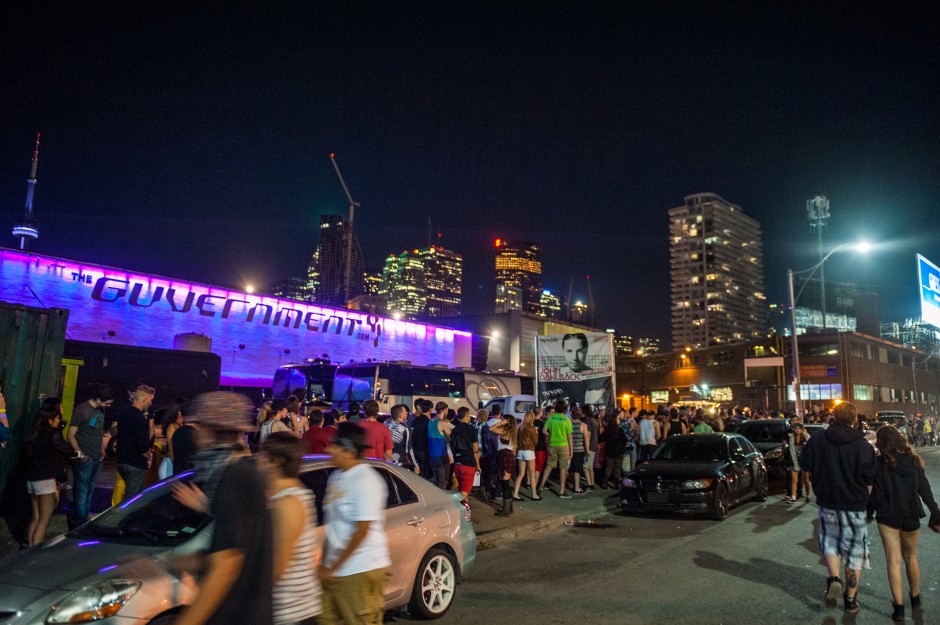



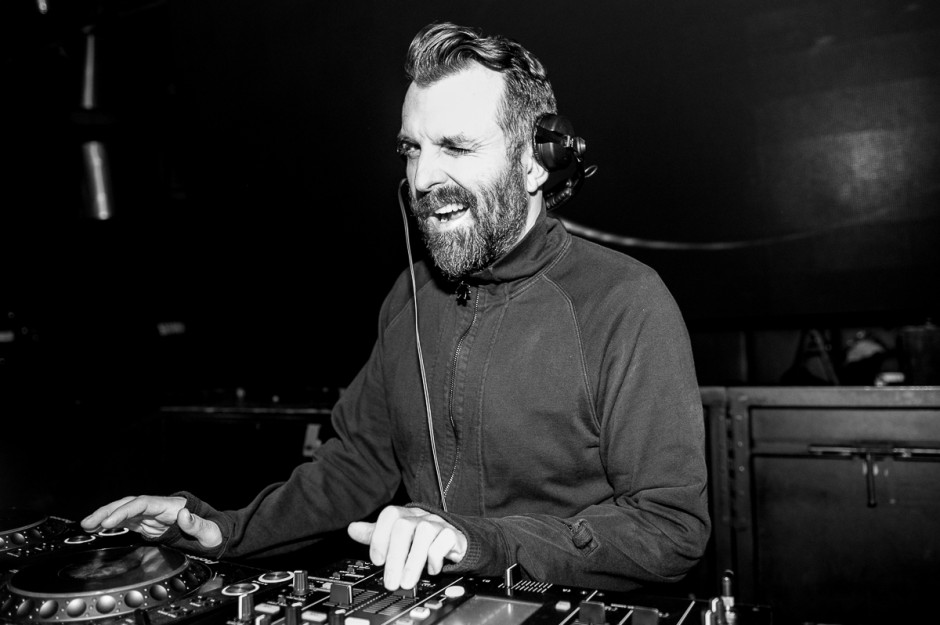


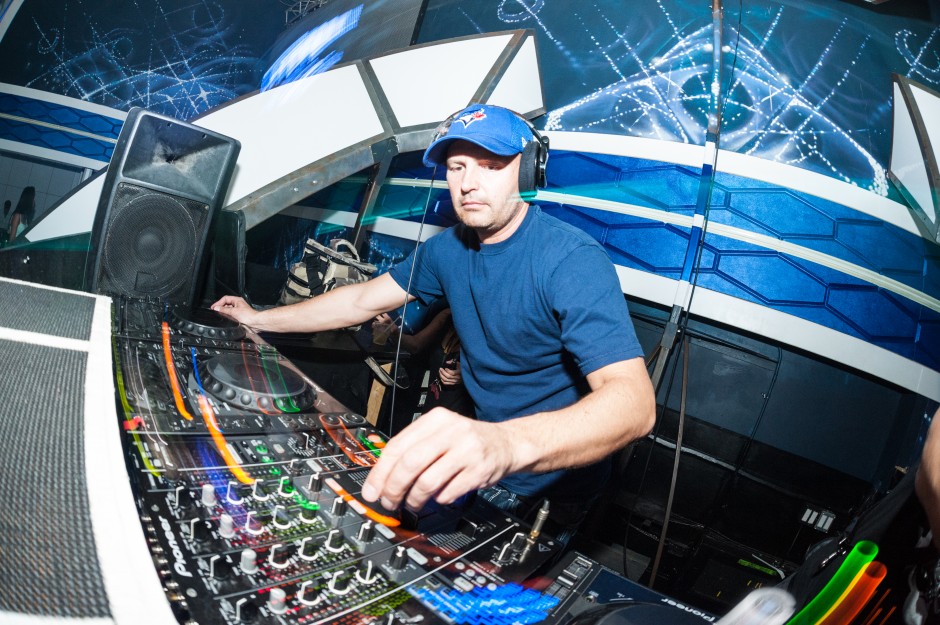

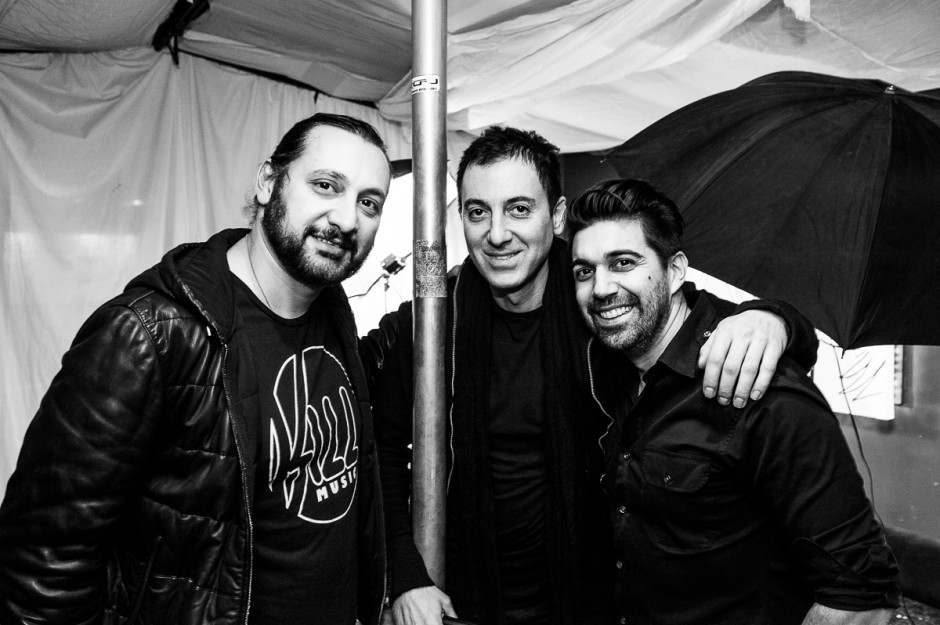






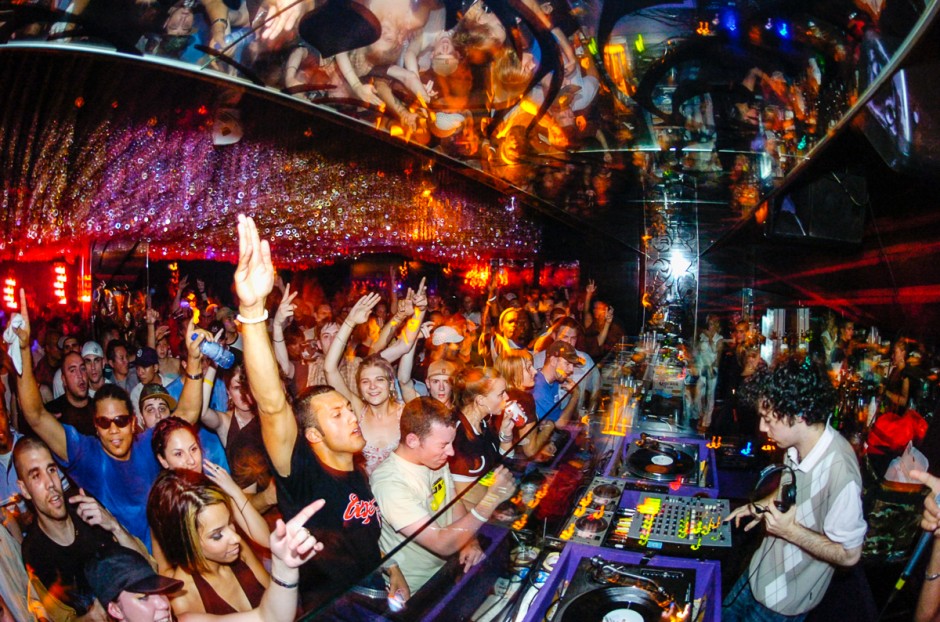




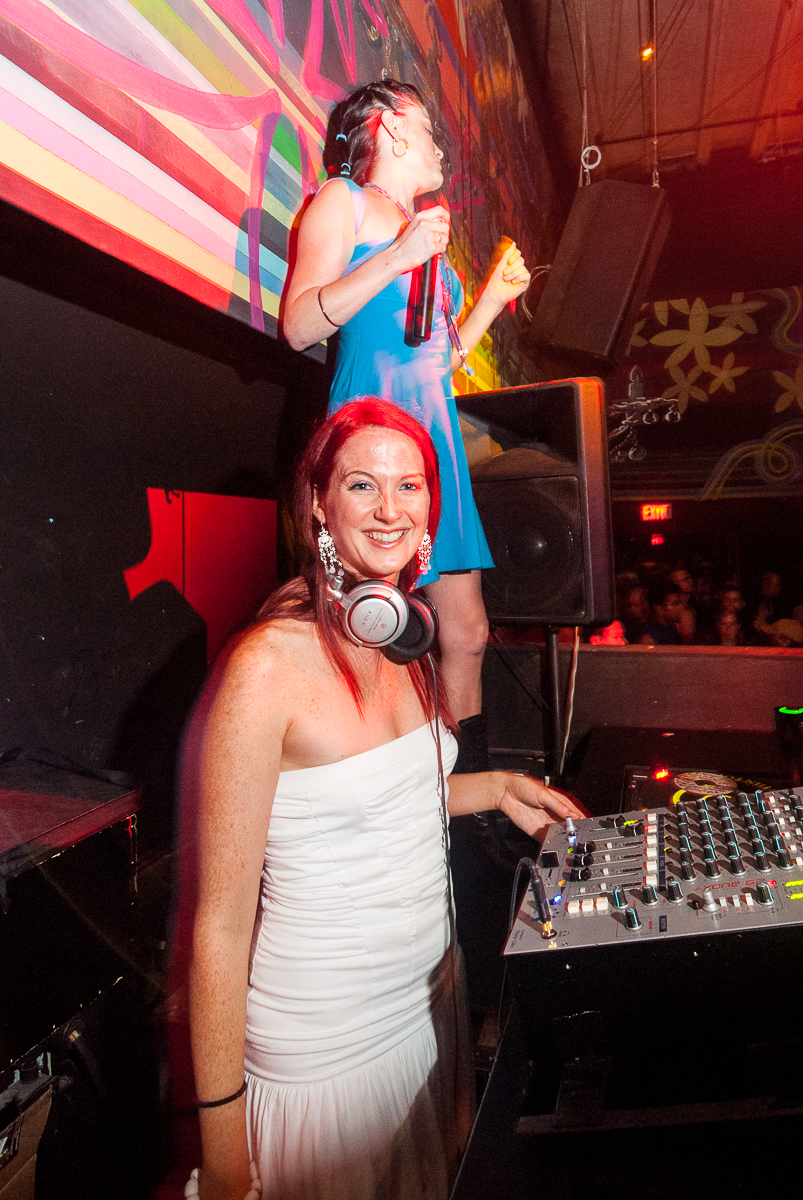
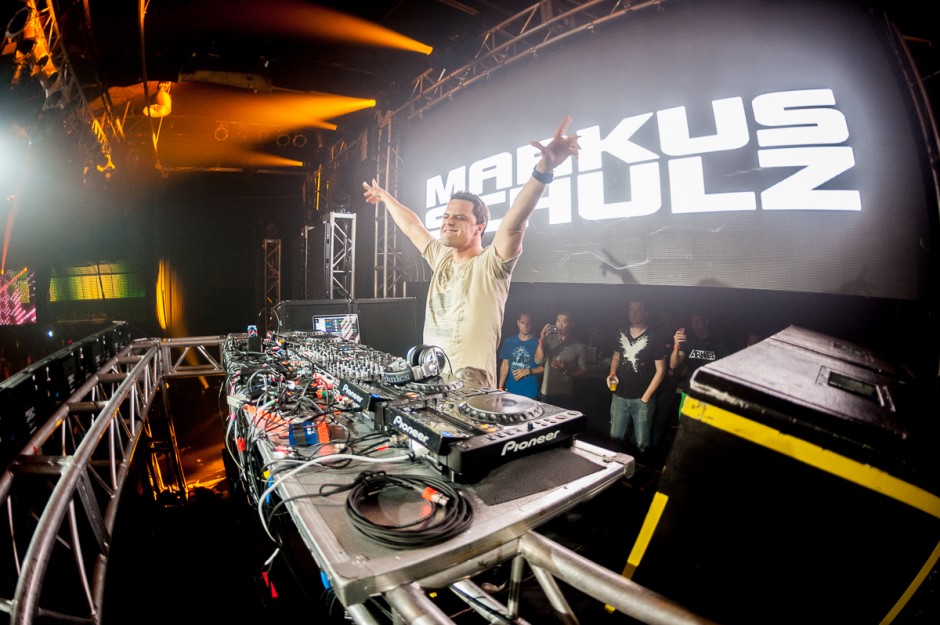

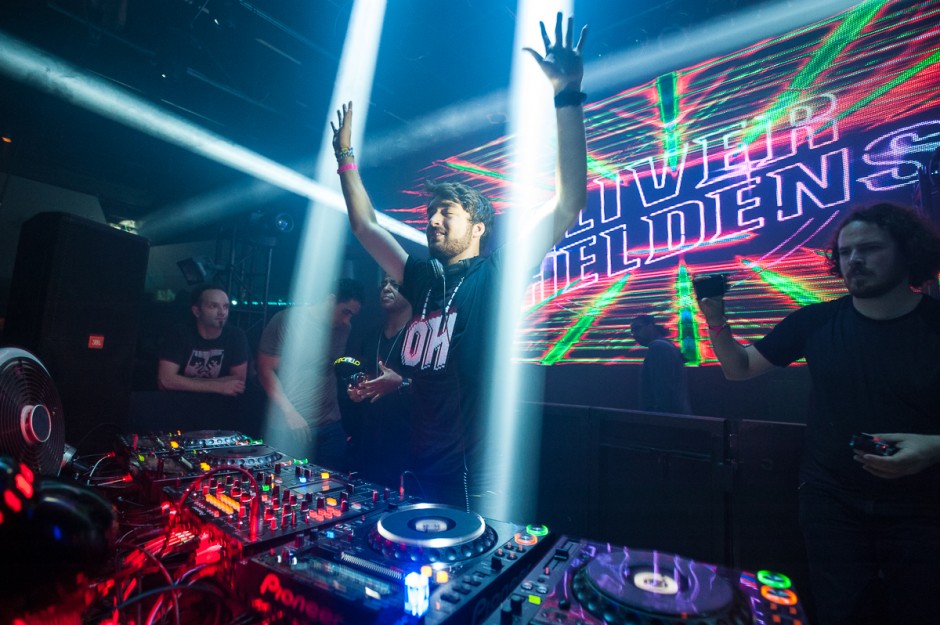






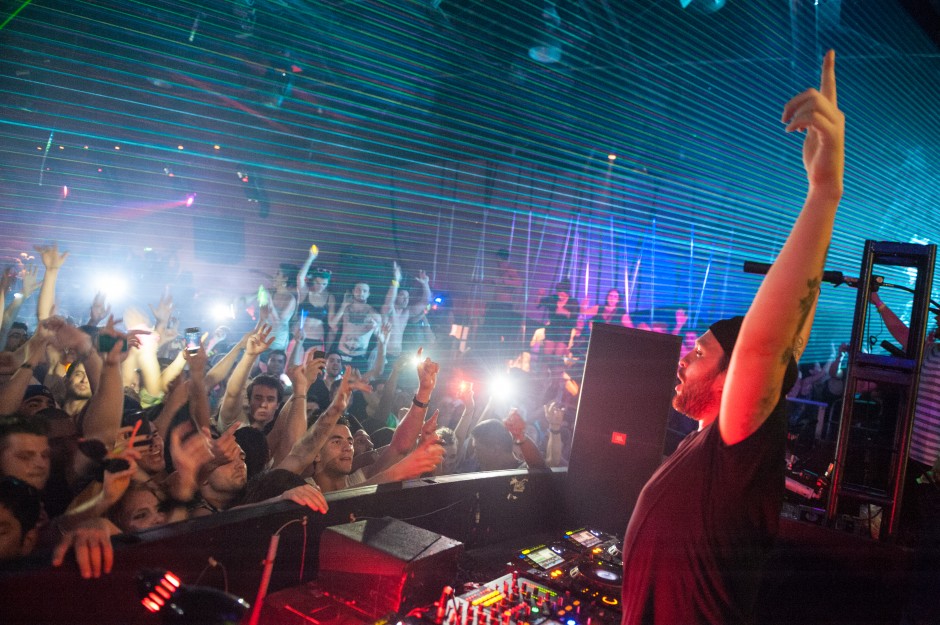
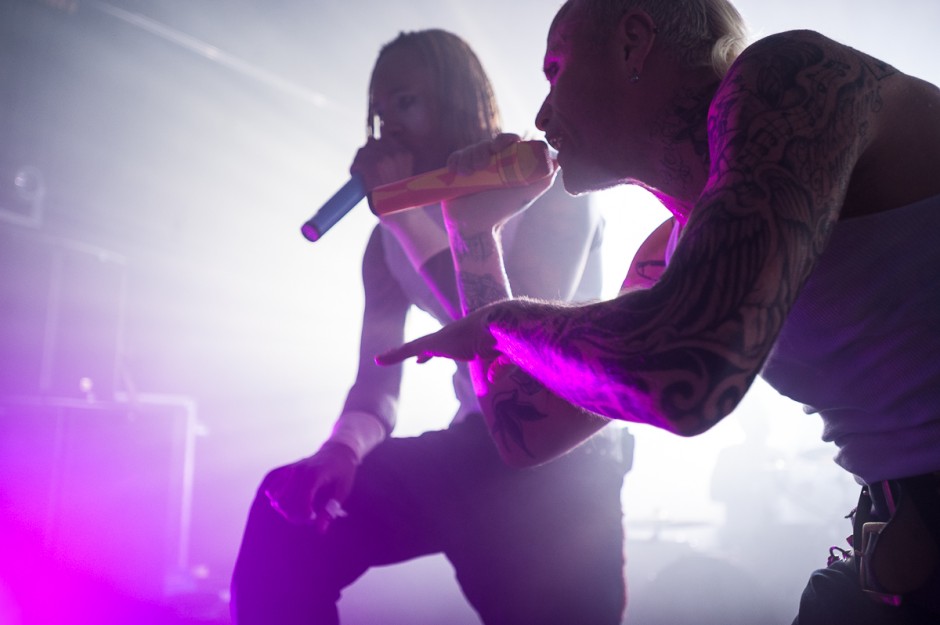







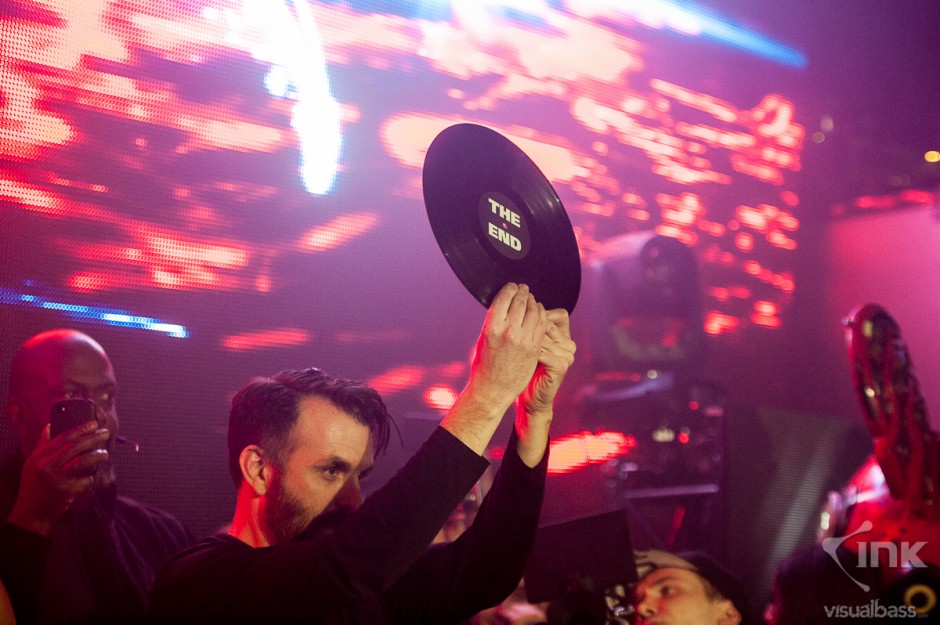




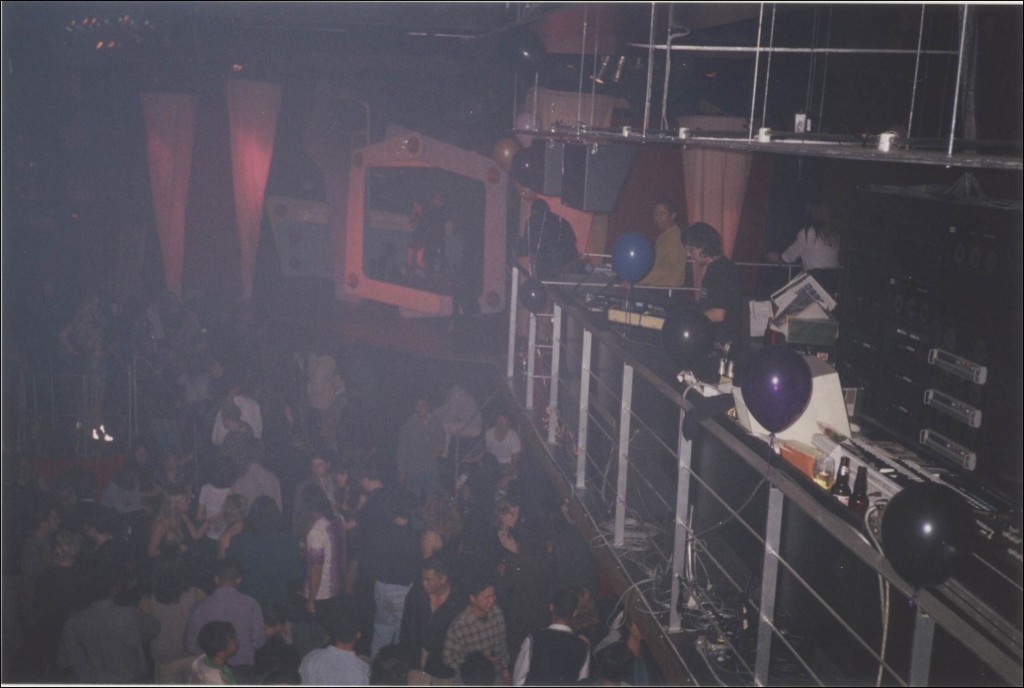





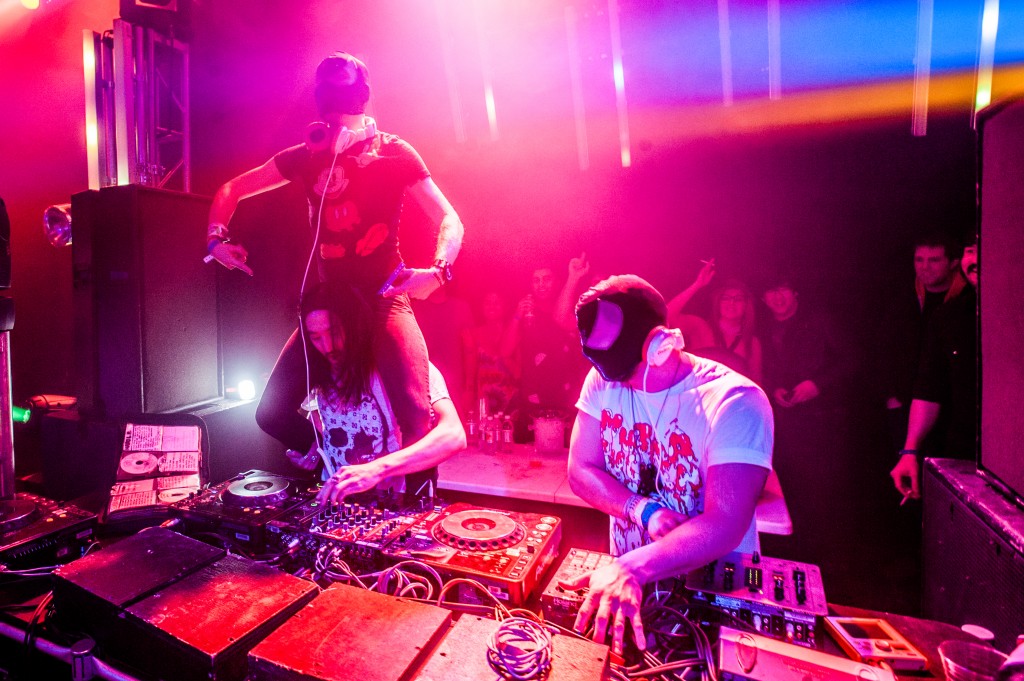
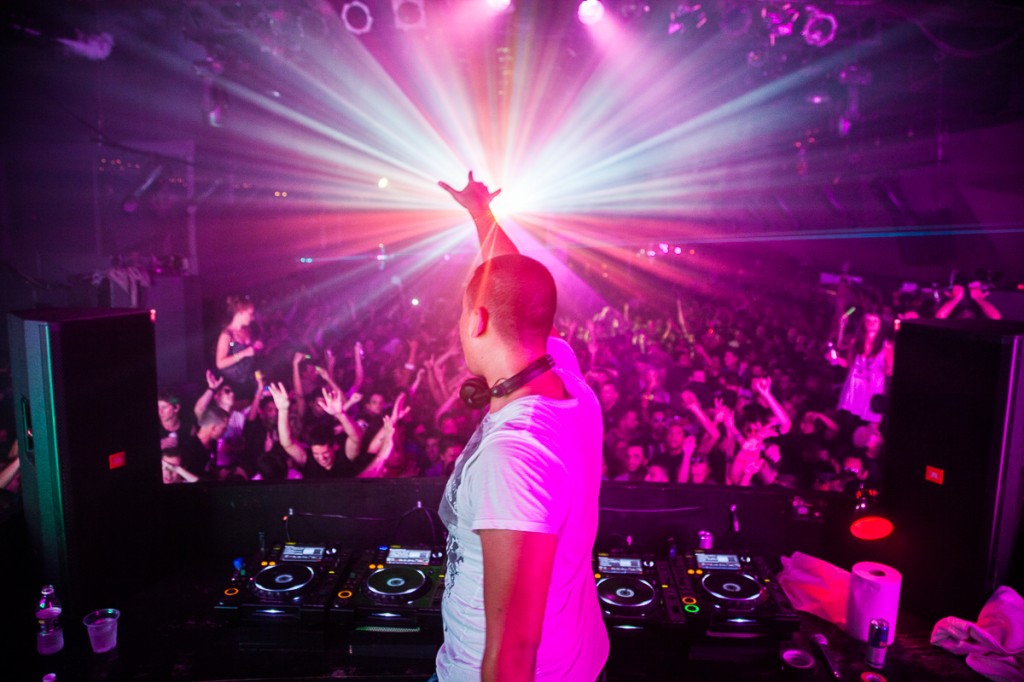







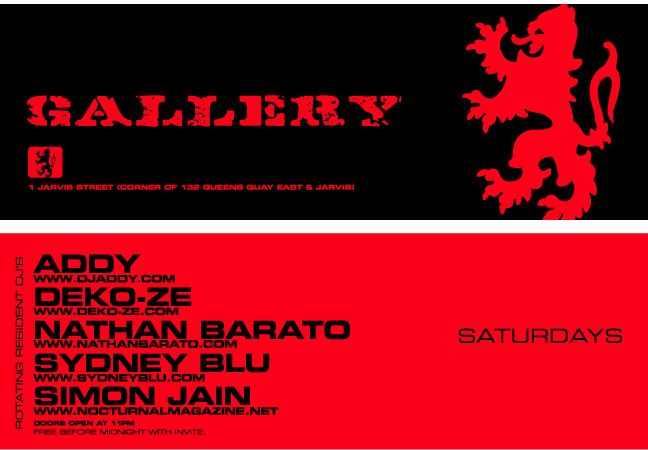


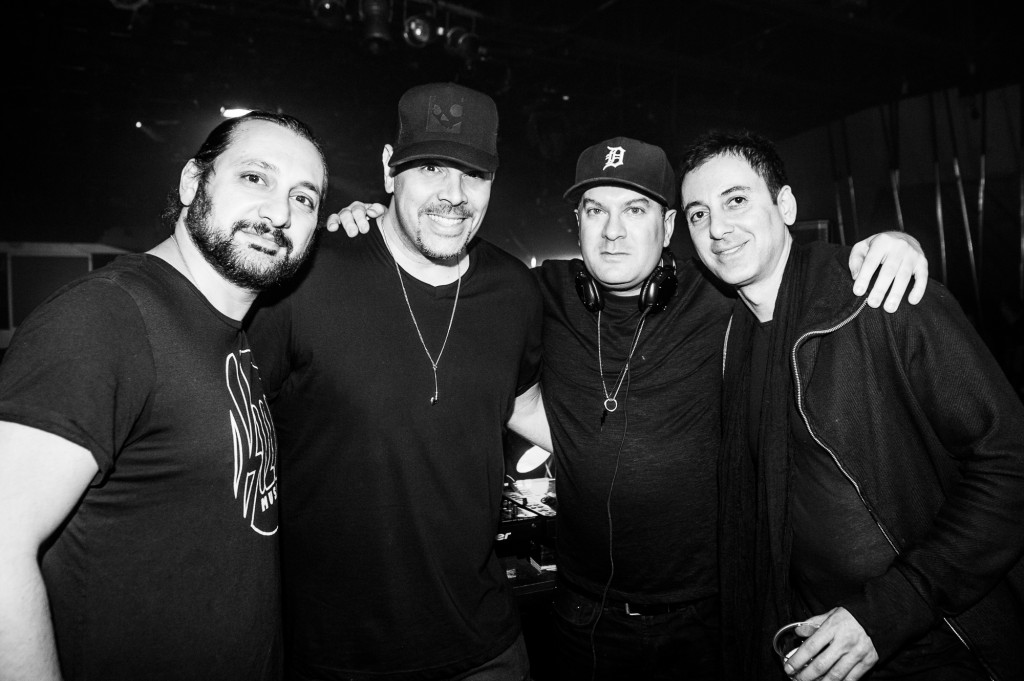

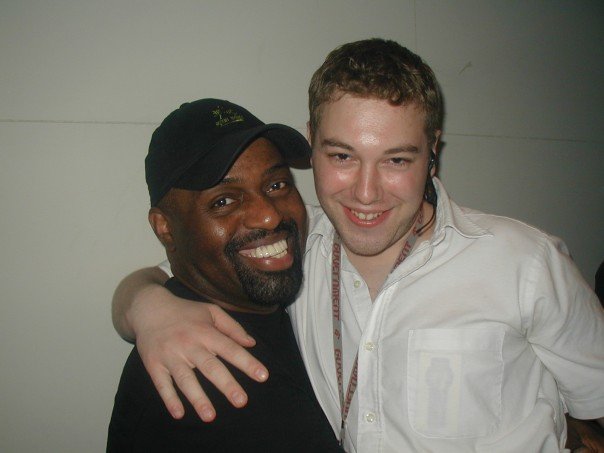











10 Comments
Putting my mark here. Went there alot to party no idea it was that big influence.
WOW…
I started going there where it all started, FRESH.
Too many memories, wouldn’t know where to start.
Charles has visions beyond the capabilities of most.
He’s the builder of everything incredible in this city.
I’m still very active in the club scene and looking forward to following his journey’s
[…] of those popping up in the formerly industrial area that was perhaps best known as the site of the now defunct music venue complex The Guvernment. The area is rapidly turning into a full-fledged innovation district spanning hundreds of thousands […]
Curious, with all the history of the Guvernment, how the he’ll did Knife Party get to play during the closing weeks? Knife Party, think of it. Lame.
Come back NOW!
Great article, Denise!
I was there for the final night at RPM and then when it reopened as The Guvernment. I think they were aiming to get a much more upscale crowd in the very beginning, and it didn’t work out. I was actually worried about Mark losing his job and the club I knew and loved closing.
..boy was I wrong about that!
I couldn’t believe how fast things went from a dance floor with 10 people on it to what is ended up as. So many great times there, and I still keep in contact with many of the people I met there over the years. Mark Oliver will always be one of the people I remember from those early days. Crazy to think it has been 18 years! Thank god I refuse to grow up.
Absolutely incredible article, well worth the read. Thank you for all the great times Guvernment, we’ll never forget you.
Awesome article….made my eyes water at parts…
Many years in the Guv, Saturday’s were my thing, back when Arman’s you don’t even know me broke and was epic, Big Love, all those great tracks.. I recall being in line that one night and a girl in front of me said “i wish i could sing vocals for house tracks” and i quickly looked at her, being shy and insecure at that age and said ” Will you marry me…” a small smile is all that came from her..
Then the early morning walk of shame up Jarvis? i think, past a church at 7-8am , always being the last group to leave or close to last and smelling like smoke and liqor and then a long bus ride home to Scarborough Markham and Ellesmere…
Memories…
Those were some of the best years of my younger life. It is how i got my internet nickname MrGuv/MrGuvernment which i still use to this day (please don’t sue me!)
It was too bad i could not make it back for the final events (living in Costa Rica now), how i will miss that place and all those who i met there but didn’t stay in touch with Marco’s and me with our mod rob pants, taking people every Saturday and always bragging about how awesome the Guv is…
Marco’s and me with our mod rob pants, taking people every Saturday and always bragging about how awesome the Guv is…
I am honored to be holding that Tune sign in this article. Those were the days… <3 #luvtheguv #tune
This is a great article. Sad to reach the end and see the demolition photos. What an amazing legacy though! Just to mention a few acts I remember seeing there: Lush and Ride, Chemical Brothers, and Skinny Puppy. Going way way back I loved dancing at RPM. Amazing place. Great writing and great photos. Thanks Denise.